The American Revolutionary War was a conflict fought between the British Empire and the 13 colonies that declared themselves the United States of America. The war lasted from 1775 to 1783, and it resulted in the independence of the United States.
There were many battles fought during the Revolutionary War, including:
- Lexington and Concord (1775)
- Bunker Hill (1775)
- Saratoga (1777)
- Brandywine (1777)
- Germantown (1777)
- Monmouth (1778)
- Savannah (1778)
- Cowpens (1781)
- Guilford Court House (1781)
- Yorktown (1781)
These battles were fought in various locations throughout the colonies and in Canada. Some of the key figures in the war included George Washington, John Adams, Thomas Jefferson, and Benjamin Franklin.
Also Read: Wars in the 1700s
The war had a significant impact on the development of the United States as a nation and its political and social systems.
Famous Battles of the Revolutionary War
1. Battle of Bunker Hill

During the American Revolutionary War, the Battle of Bunker Hill took place on June 17, 1775. It was the war’s first significant engagement, and it took place on Breed’s Hill in Charlestown, Massachusetts, next to Bunker Hill.
The fight was fought between a British army and colonial militias defending the hills surrounding Boston.
The British attempted to take the hills in order to gain a strategic edge over the colonists, and they made multiple raids on colonial outposts.
Also Read: Valley Forge Facts
Despite being outnumbered and outgunned, the colonists battled valiantly and held off the British for several hours. They did, however, run out of ammo and were forced to retire.
Despite the British victory, the Battle of Bunker Hill was regarded as a big morale booster for the colonists, as it demonstrated that they could stand up to the British forces and battle them on equal terms.
The conflict also underlined the need of having a strong and well-trained military, which inspired the colonists to fight for their freedom even harder.
2. Battles of Lexington and Concord
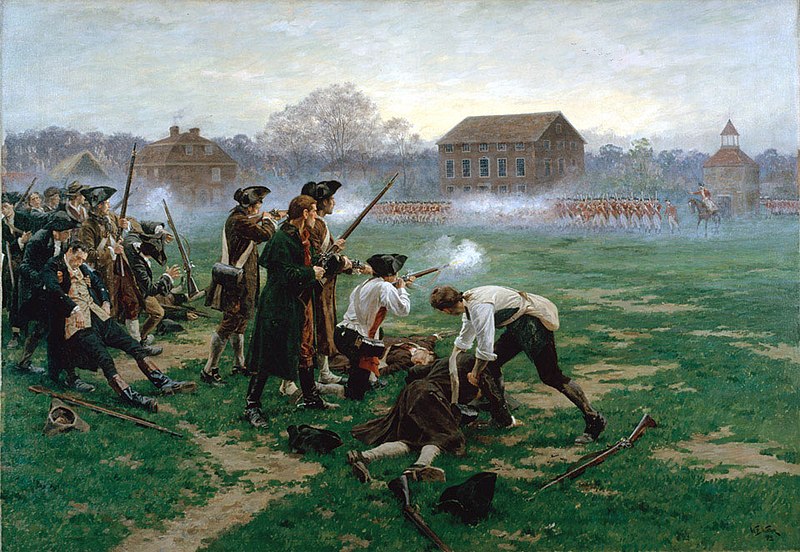
The Battles of Lexington and Concord were the American Revolutionary War’s initial military engagements. On April 19, 1775, they fought in Lexington and Concord, Massachusetts.
The battle began in Lexington, when a squad of British soldiers dispatched to confiscate weapons and arrest rebel leaders came into combat with a group of colonial militias. Several militiamen were killed or injured after shots were fired.
Also Read: Years of the American Revolution
The British marched on to Concord, where they met stiffer resistance from the colonists. Following a conflict, the British were forced to retreat back to Lexington.
They were pursued by a large number of colonial militiamen, who opened fire on them and sustained serious fatalities.
The Battles of Lexington and Concord were pivotal moments in the Revolutionary War, demonstrating that the colonists were eager to fight for their independence and were capable of facing off against the British forces.
3. Siege of Yorktown
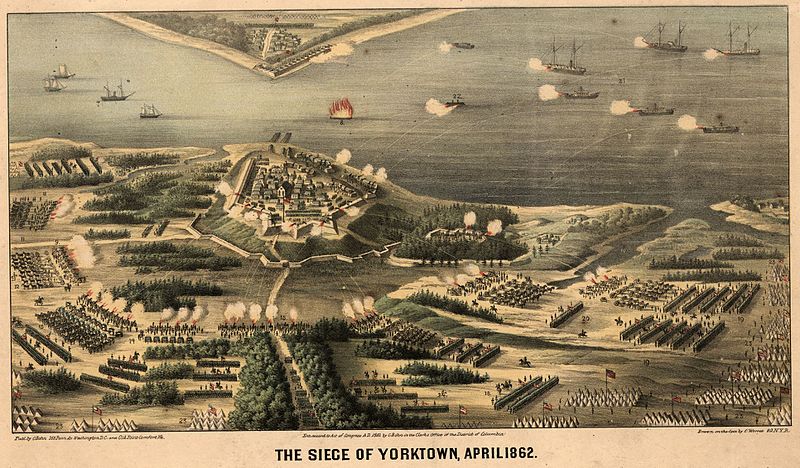
The Battle of Yorktown was a military conflict of the American Revolutionary War that took place in October 1781.
The battle was fought between the British Army, led by General Charles Cornwallis, and the Continental Army, led by General George Washington, as well as French naval and ground troops led by the Comte de Rochambeau and Admiral de Grasse.
The battle took place in Yorktown, Virginia, and was the Revolutionary War’s final significant land engagement. The united Franco-American forces besieged Yorktown and eventually compelled the British to capitulate on October 19, 1781.
The Battle of Yorktown ultimately ended the war because the British government, which was now embroiled in a costly confrontation with France, opted not to fight the colonies any longer. The victory at Yorktown was a watershed moment in the fight for American independence, signaling the end of British dominance in the colonies.
4. Battles of Saratoga
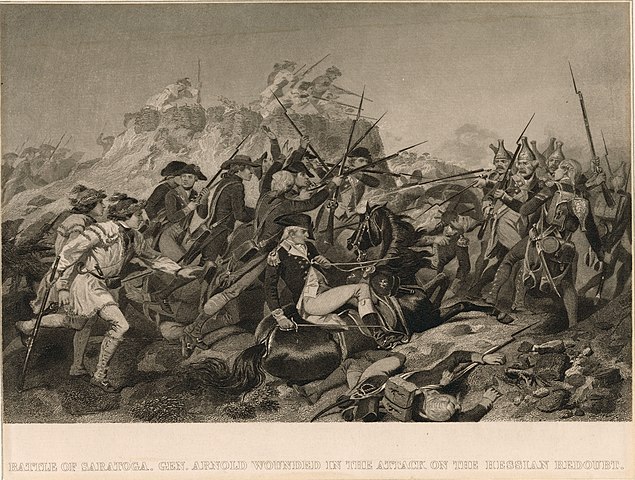
The Battles of Saratoga were two key battles fought in the fall of 1777 during the American Revolutionary War.
The Battle of Freeman’s Farm occurred on September 19, 1777, and the Battle of Bemis Heights occurred on October 7, 1777.
The battles were fought between General John Burgoyne’s British Army and General Horatio Gates’ Continental Army.
The British were advancing southward down the Hudson River towards Saratoga, seeking to conquer the crucial colonial bastion of Albany, New York.
The Continental Army successfully defended the territory and defeated the British in both fights, aided by local militiamen. The Battles of Saratoga were notable because they were the Continental Army’s first major military success and helped to strengthen colonist morale.
The victory also persuaded France, which had been providing secret aid to the colonists, to openly support the Americans in the war.
5. Battle of Trenton
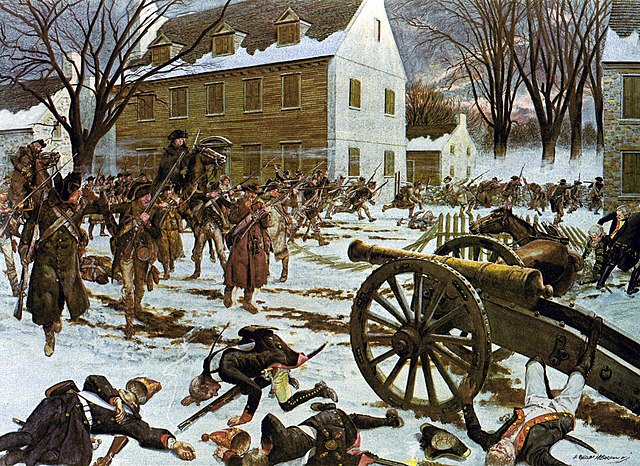
The Battle of Trenton took place on December 26, 1776, during the American Revolutionary War. It was fought between a group of Continental Army soldiers led by General George Washington and a British-hired detachment of Hessian mercenaries fighting against the colonists.
The combat, which took place in Trenton, New Jersey, was a watershed moment in the war. The Continental Army was in chaos at the time, having suffered a string of defeats and losses. Recognizing the need to bolster morale and restore the army, Washington devised a daring attack against the Hessian forces stationed at Trenton.
Also Read: Facts About the Battle of Trenton
Washington and his troops crossed the Delaware River on the night of December 25 and launched a surprise attack on the Hessians early the next morning. The Hessians were caught off guard and quickly defeated, with almost 900 captured. In the engagement, the Continental Army sustained only a few losses.
The victory at Trenton provided a significant morale boost to the Continental Army and served to revitalize the revolutionary cause. It also proved the viability of surprise strikes and the significance of keeping a strong and well-trained military.
6. Siege of Boston
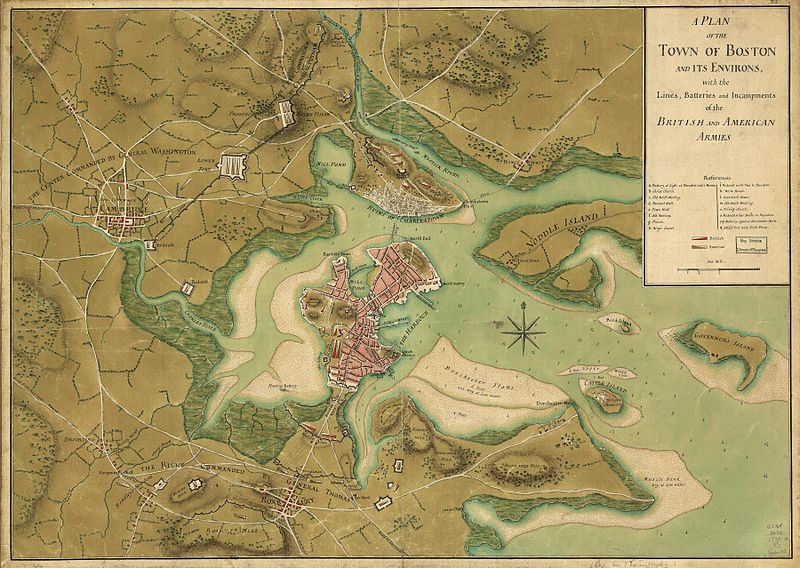
The Siege of Boston was a military campaign that occurred early in the American Revolutionary War. It lasted from April 1775 to March 1776 and was fought between the invading British Army and colonial militiamen from the surrounding area.
The siege began in April 1775, shortly after the war began, when colonial militiamen besieged Boston in response to news of the Battles of Lexington and Concord. Because of the unexpected rebellion, the British Army was obliged to retreat to the protection of the city and bolster their fortifications.
The colonists blockaded the city for several months, conducting raids and skirmishes against the British. The British, unable to break out of the city and replenish their forces, were forced to rely on their food and ammunition stocks.
The British abandoned Boston in March 1776 and fled to Halifax, Nova Scotia. The Siege of Boston resulted in a colonial triumph and was a crucial turning point in the Revolutionary War. It highlighted the colonists’ determination and bravery, as well as the possibility of success through guerilla tactics.
7. Battle of Long Island
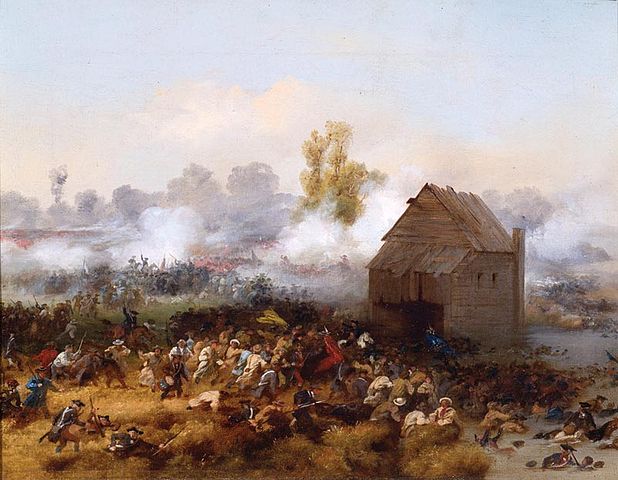
The Battle of Long Island, also known as the Battle of Brooklyn, was a military conflict of the American Revolutionary War that took place on August 27, 1776.
It was fought between forces headed by General William Howe of the British Army and General George Washington of the Continental Army.
Also Read: Facts About the Battle of Long Island
The conflict took place on Long Island’s western tip, in present-day Brooklyn, New York. The British, who had arrived on the island many days before, made a surprise attack on the defending Continental Army. The outnumbered and outgunned Continental Army was swiftly defeated and forced to retire.
Despite defeat, the Continental Army successfully evacuated the majority of its troops over the East River to Manhattan.
The Battle of Long Island resulted in a crushing defeat for the Continental Army and a big win for the British. With almost 1,000 American soldiers dead or prisoner, it was one of the largest and most expensive battles of the Revolutionary War.
8. Battle of Cowpens
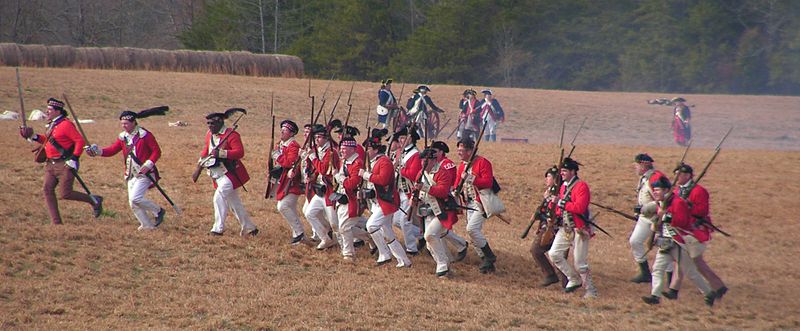
The Battle of Cowpens took place on January 17, 1781, during the American Revolutionary War. It was fought between forces headed by Banastre Tarleton of the British Army and Brigadier General Daniel Morgan of the Continental Army.
The combat took place in Cowpens, South Carolina, where the Continental Army won a decisive victory. Morgan, in command of an unit of Continental Army and militia forces, defeated the British using a mix of strategic location and inventive tactics.
Also Read: Facts About the Battle of Cowpens
The Continental Army and militia forces were able to repel the initial British attack and then counterattack, causing heavy fatalities and forcing the British to retreat.
The Battle of Cowpens was a crucial victory for the Continental Army, boosting morale and bolstering the revolutionary cause. It also played a significant role in the British surrender at the Siege of Yorktown later that year.
9. Battle of Kings Mountain
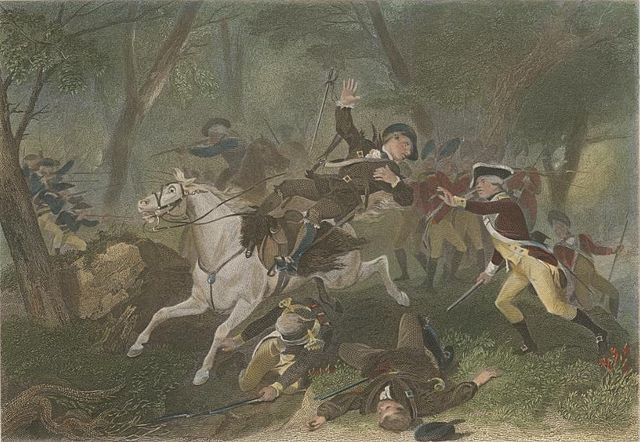
The Battle of Kings Mountain took place on October 7, 1780, during the American Revolutionary War. The battle was fought between an American Patriot militia army led by Colonels William Campbell, John Sevier, and James Williams and a Loyalist militia force led by Major Patrick Ferguson.
The battle took place in Kings Mountain, South Carolina, and the Patriot forces were victorious. Despite being outnumbered and outgunned, the Patriots were able to ambush the Loyalist soldiers and inflict devastating fatalities. The Loyalists were forced to flee, and many were captured.
The Battle of Kings Mountain boosted Patriot morale and helped to bolster the revolutionary cause throughout the southern colonies. It also played a role in the British surrender at the Siege of Yorktown the following year.
10. Battle of Princeton

The Battle of Princeton took place on January 3, 1777, during the American Revolutionary War. It was fought between forces headed by General Charles Cornwallis of the British Army and General George Washington of the Continental Army.
The conflict took place in Princeton, New Jersey, where the Continental Army won a decisive victory. After being forced to retire across New Jersey following setbacks at the Battles of Brandywine and Germantown, Washington made a surprise attack on British forces stationed at Princeton.
The Continental Army defeated the British and took control of numerous critical fortresses, including Nassau Hall.
The victory at Princeton gave the Continental Army a huge morale boost and helped them recover their confidence after multiple defeats.
It also proved the viability of surprise strikes and the significance of keeping a strong and well-trained military.
11. Capture of Fort Ticonderoga

The Capture of Fort Ticonderoga was a military conflict that occurred on May 10, 1775, early in the American Revolutionary War.
A group of colonial militiamen headed by Ethan Allen and Benedict Arnold fought against a British garrison stationed at the fort.
Fort Ticonderoga was a strategically important stronghold located in New York on the beaches of Lake Champlain. It was erected in the 1750s by the French and was taken by the British during the French and Indian War.
The colonial militiamen made a surprise attack on the fort, capturing it with little resistance.
The capture of Fort Ticonderoga was a key victory for the colonists and a critical role in the early revolutionary activities’ success. It also proved the viability of surprise strikes and the significance of keeping a strong and well-trained military.
12. Battle of Camden
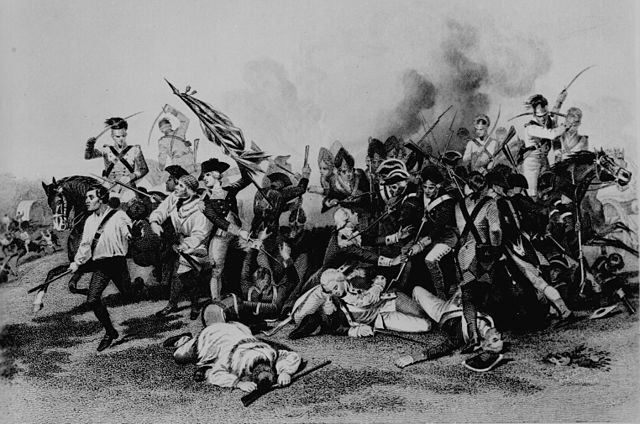
The Battle of Camden took place on August 16, 1780, during the American Revolutionary War. It was fought between forces headed by General Charles Cornwallis of the British Army and General Horatio Gates of the Continental Army.
The conflict took place in Camden, South Carolina, and the British were victorious. The outnumbered and outgunned Continental Army was unable to properly resist against the British invasion and was forced to retire. The battle was a catastrophic defeat for the Continental Army, with many soldiers and vital military equipment lost.
The Battle of Camden had a key role in the final British victory in the southern colonies and the Continental Army’s loss in the region. It also emphasized the significance of keeping a strong and well-trained military in order to defend effectively against enemy attacks.
13. Battle of Monmouth
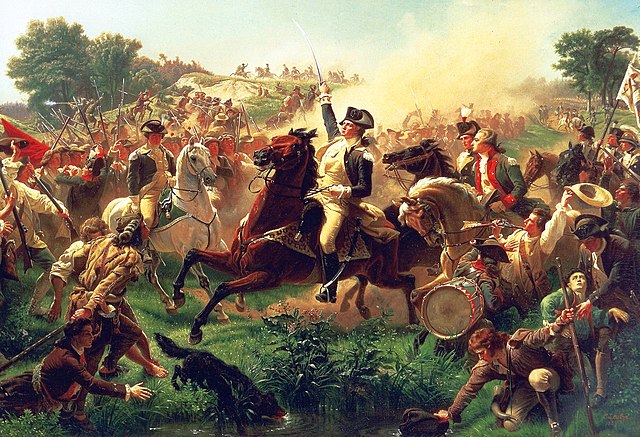
The Battle of Monmouth took place on June 28, 1778, during the American Revolutionary War. It was fought between forces led by General Henry Clinton of the British Army and General George Washington of the Continental Army.
The battle took place in Monmouth Court House, New Jersey, where the Continental Army won a decisive victory. The Continental Army attacked the British, who were attempting to escape from Philadelphia to New York, and engaged in a furious combat.
Despite their numerical disadvantage, the Continental Army was able to repel the British and compel them to retreat.
The Battle of Monmouth was a crucial victory for the Continental Army, boosting morale and bolstering the revolutionary cause. It also played a significant role in the British surrender at the Siege of Yorktown later that year.
